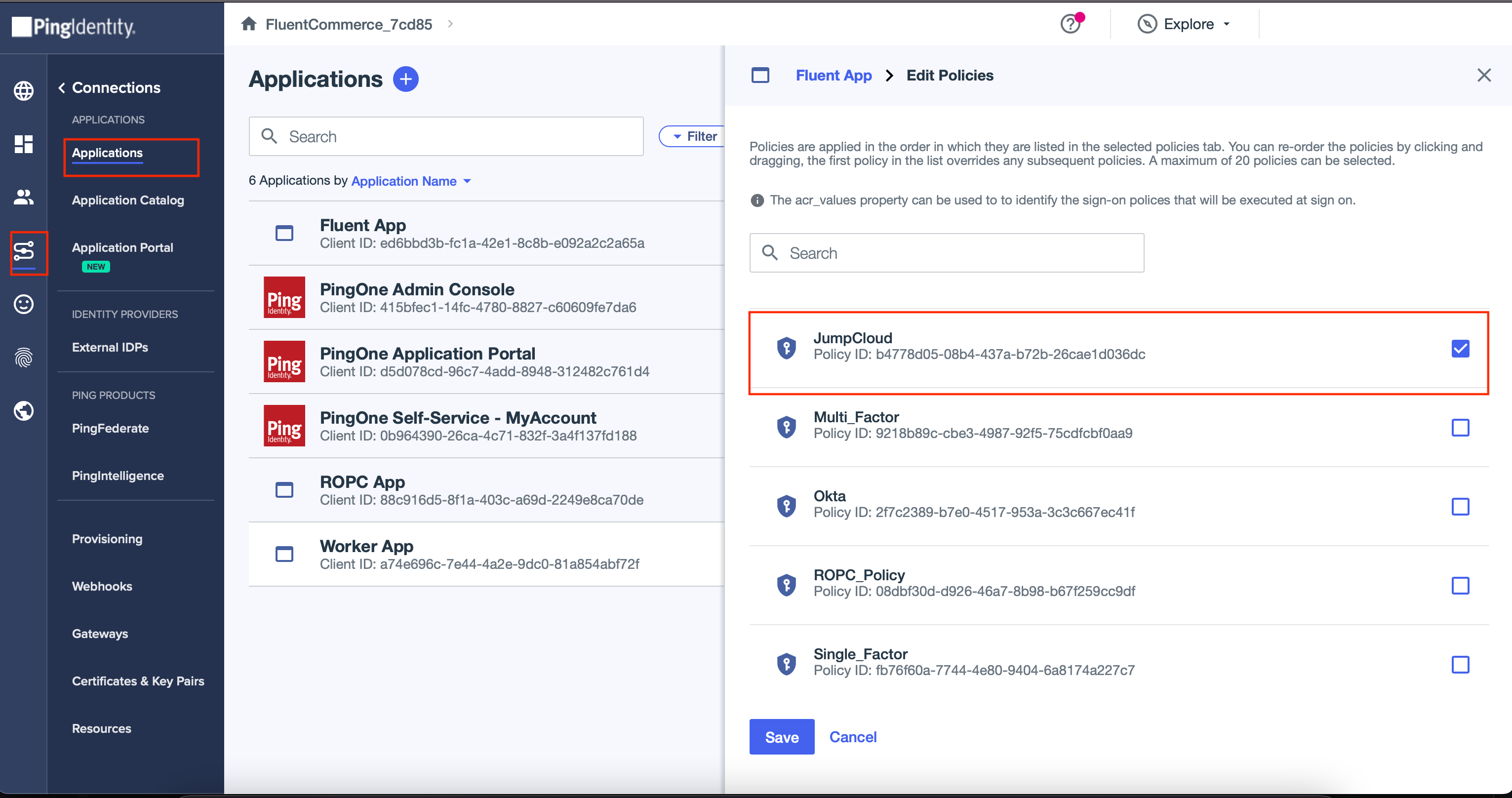SSO: Configure JumpCloud connection via SAML
Author:
Fluent Commerce
Changed on:
8 Oct 2024
Key Points
- It is possible to use the generic SAML configuration to add an external identity provider that follows the SAML standard
- This page provides a guide on how to configure an external identity provider via SAML configuration.
Steps
 Step 1.
Step 1.
Go to JumpCloud. If one doesn’t have a JumpCloud account, they can create one.
 Step 2.
Step 2.
On the left menu click SSO and then click on Plus Button.

 Step 3.
Step 3.
On the Configure New SSO Application drawer click on Custom SAML App button.
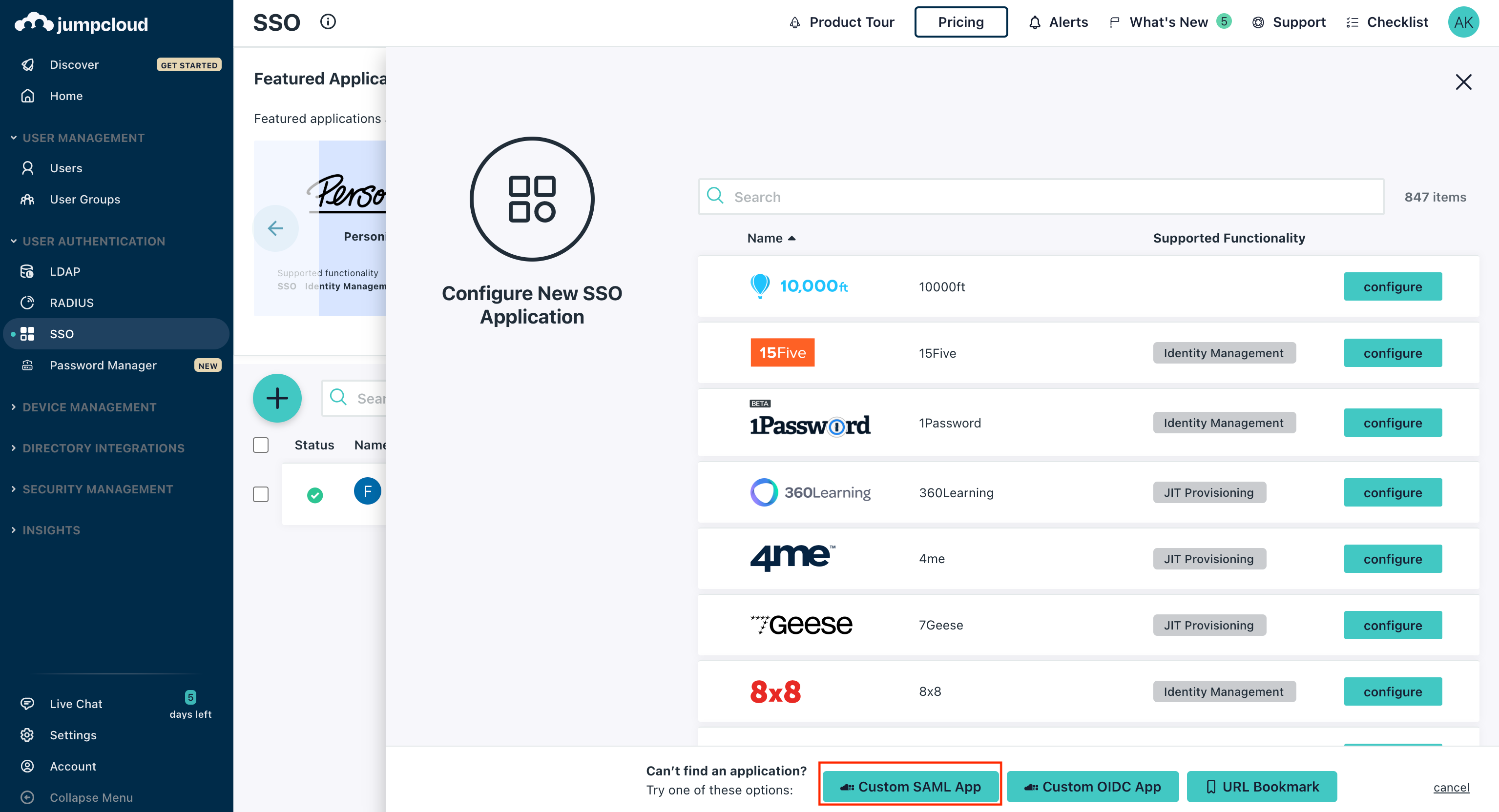
 Step 4.
Step 4.
On the General Info tab of New Application drawer enter application name into Display Label field.

 Step 5.
Step 5.
Switch to the SSO tab. Here we need to fill IdP Entity ID, SP Entity ID and ACS URL fields.

 Step 6.
Step 6.
To fill the values from the previous step we need to create External IdP in PingOne.
 Step 7.
Step 7.
Go to Connections → External IDPs.
 Step 8.
Step 8.
Click + Add Provider.
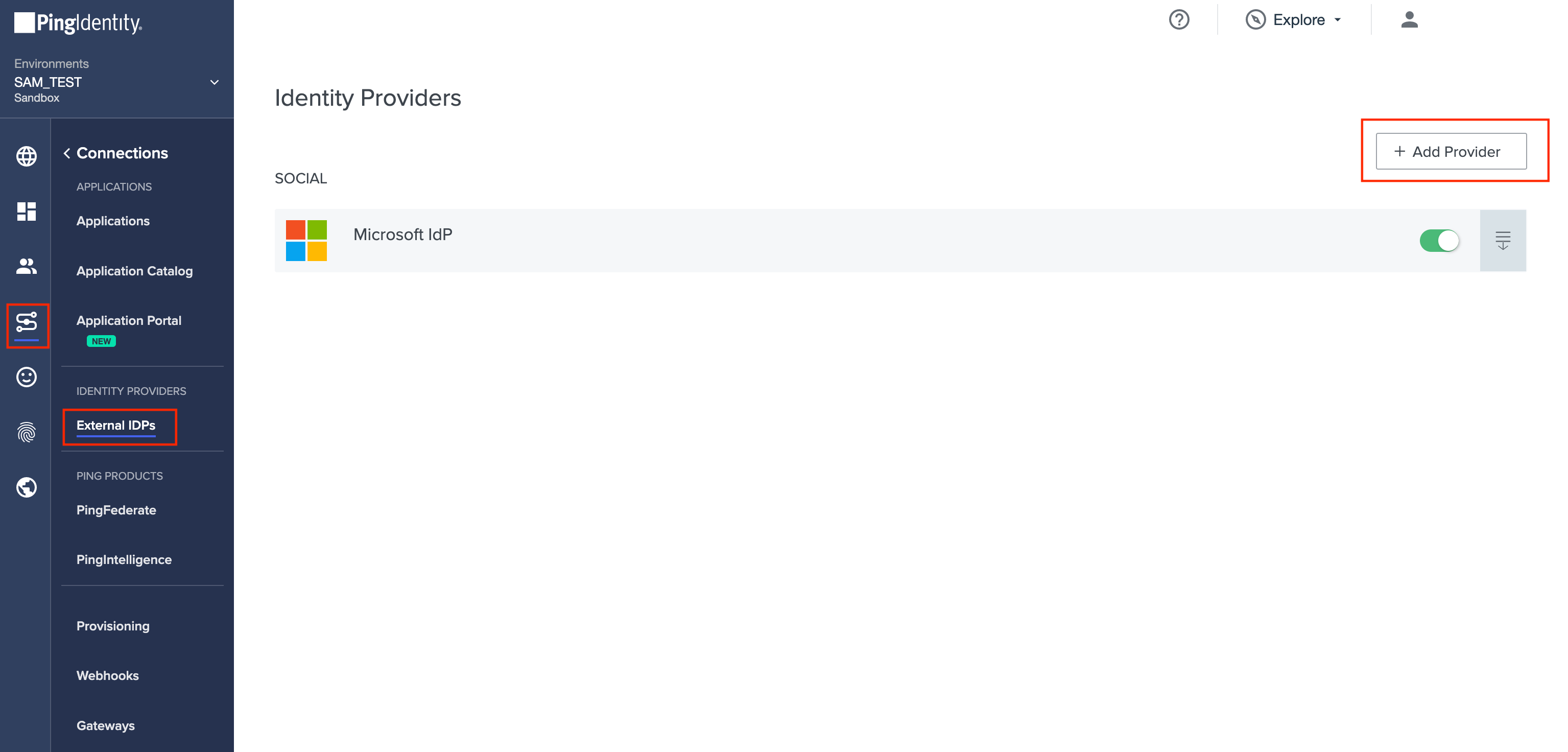
 Step 9.
Step 9.
Click SAML.
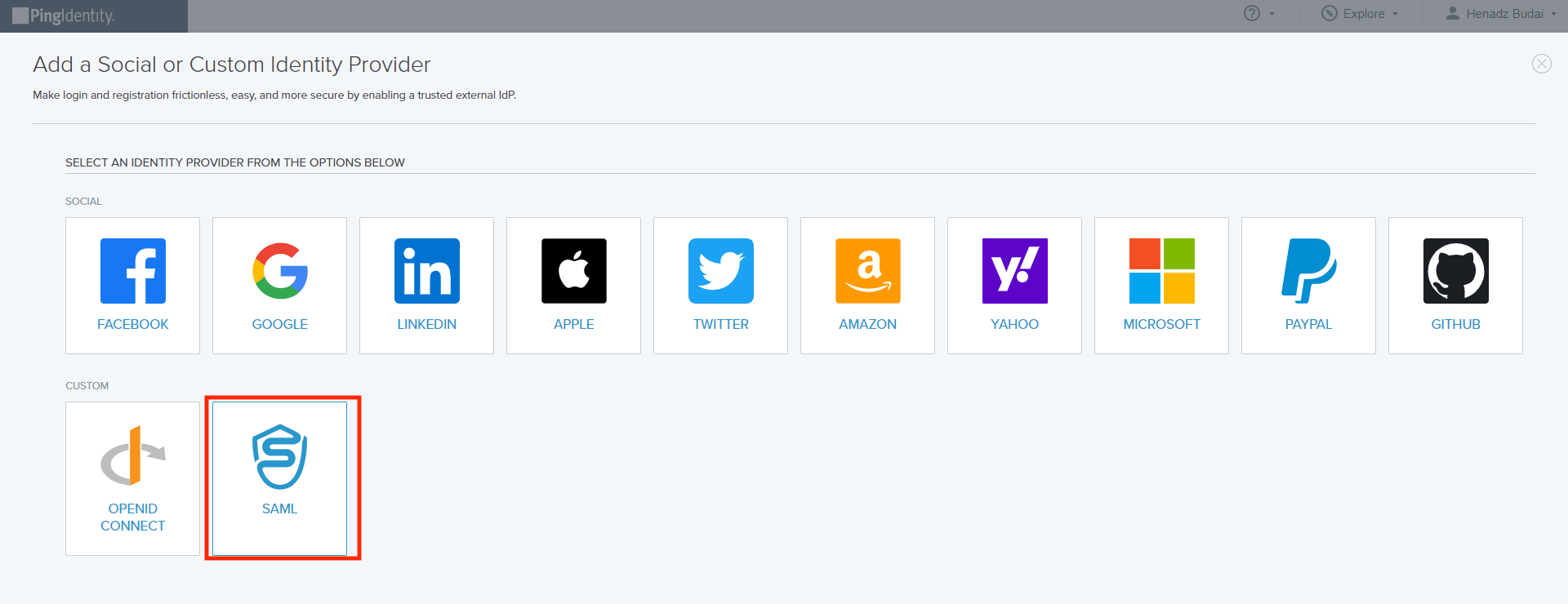
 Step 10.
Step 10.
On the Create Profile screen, enter the following
- Name. A unique identifier for the identity provider.
- Description (optional). A brief characterization of the identity provider.
- Icon (optional). An image to represent the identity provider. Use a file up to 1MB in JPG, JPEG, GIF, or PNG format.
- Login button (optional). An image to be used for the login button that the end user will see. Use a 300 X 42 pixel image.
 Step 11.
Step 11.
Click Continue.

 Step 12.
Step 12.
On the Configure PingOne Connection screen copy PingOne (SP) entity ID and put the value into the IdP Entity ID, SP Entity ID fields on the New Application drawer in JumpCloud (see step 5).

 Step 13.
Step 13.
Click Continue.
 Step 14.
Step 14.
On the Configure IDP Connection screen copy ACS ENDPOINT and fill the copied value into the ACS URL field on the New Application drawer in JumpCloud (see step 5).
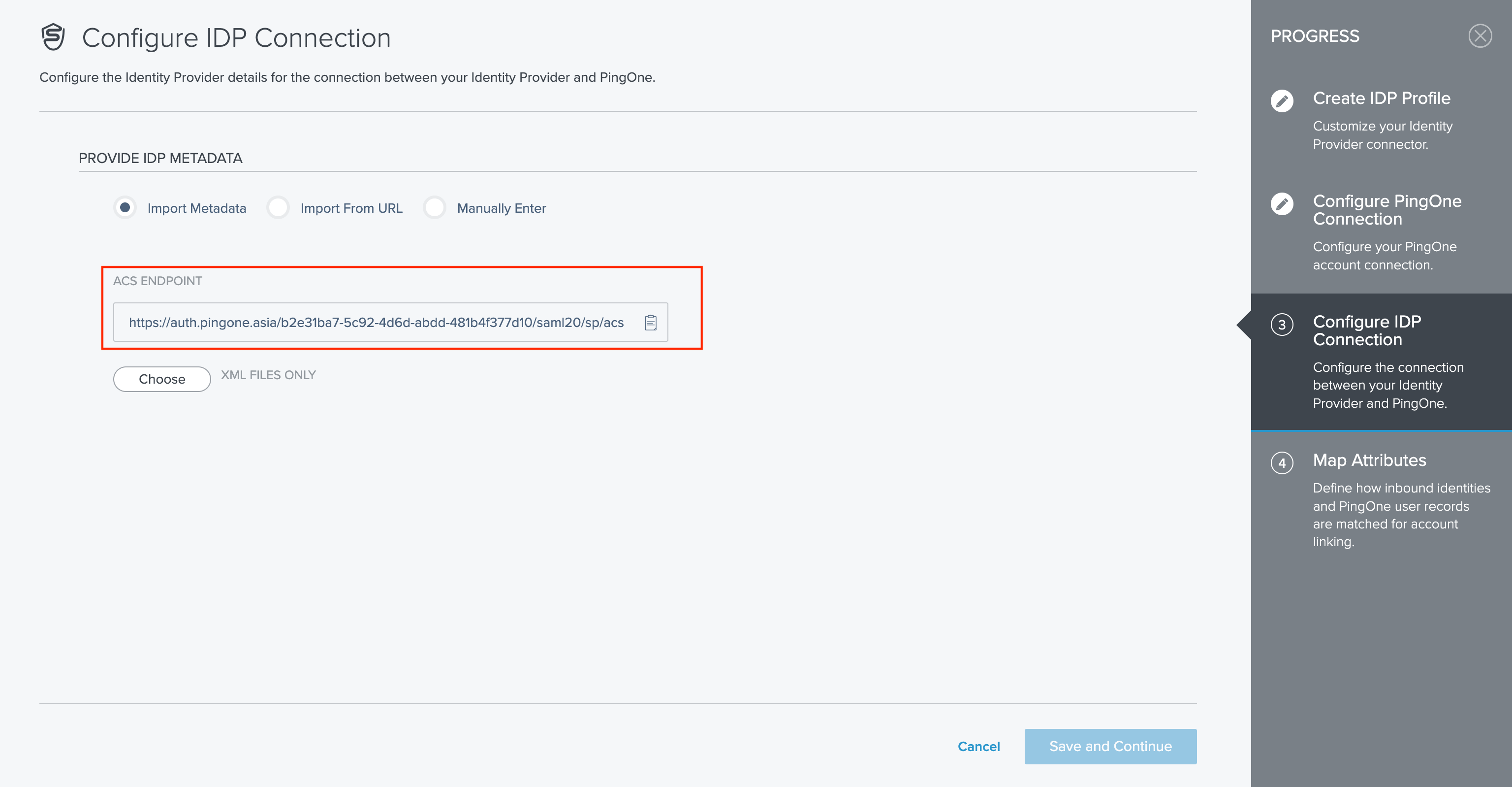
 Step 15.
Step 15.
Go to JumpCloud and on the New Application drawer change value in SAML Subject NameID to the username value.

 Step 16.
Step 16.
Switch to the User Groups tab and select groups which will have access to the application.

 Step 17.
Step 17.
Click on the activate button and then confirm your new SSO connector instance (click on the continue button).

 Step 18.
Step 18.
After the application is successfully created, it is necessary to export Metadata:
- In JumpCloud click SSO
- select your created application in the list
- switch to the SSO tab on the opened drawer
- click on Export Metadata button -> file containing data is downloaded to the computer.
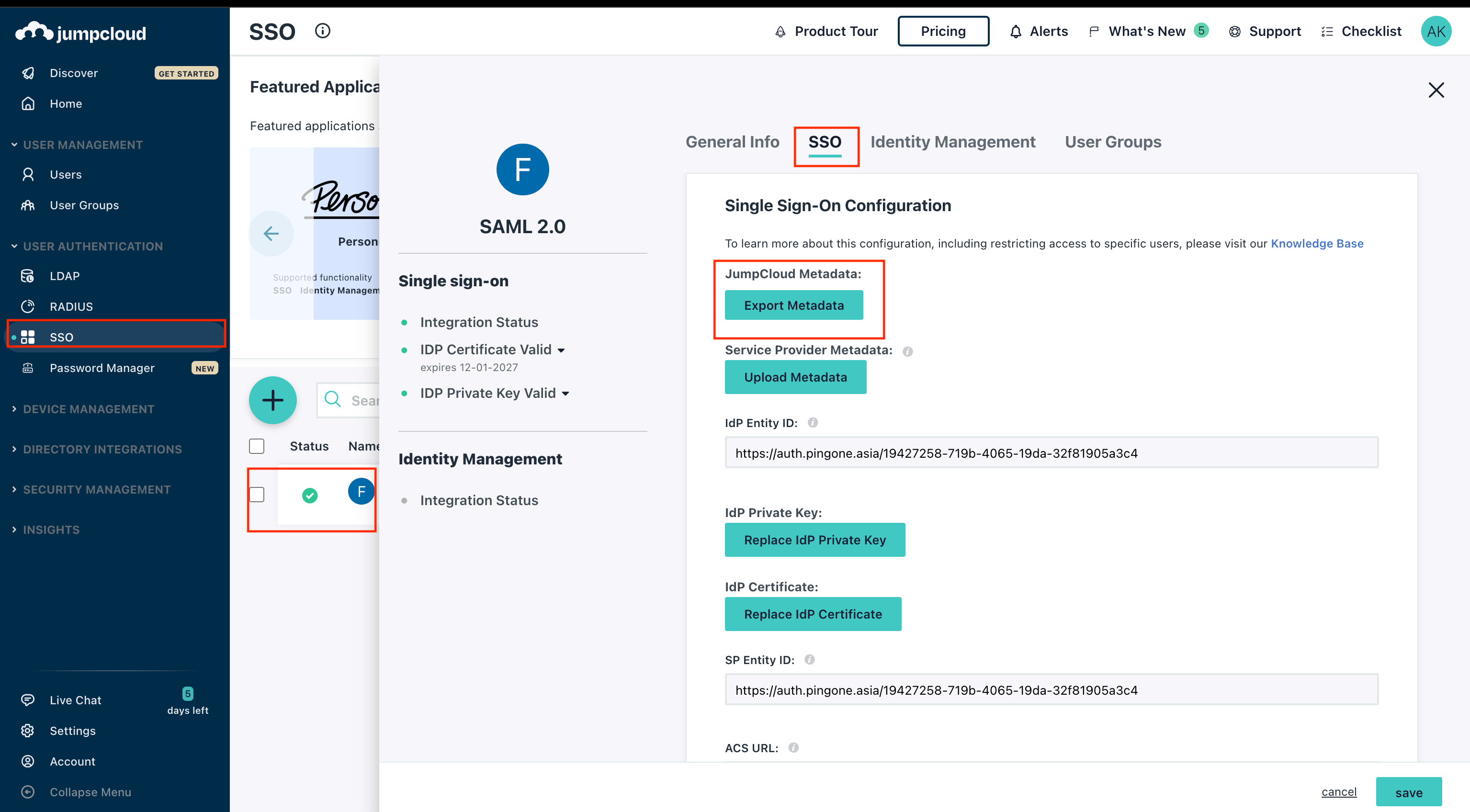
 Step 19.
Step 19.
Go back to PingOne and select option Import Metadata on Configure IDP Connection screen, click on the Choose button and then select downloaded file.


 Step 20.
Step 20.
Click Save and Continue.
 Step 21.
Step 21.
On Map Attributes screen click on the Save&Finish button.

 Dont't forget
Dont't forget
- Enable the External Identity Provider.
- Create a new Authentication Policy and add the newly created External Identity Provider to it.

- Add the Authentication Policy to the application.
